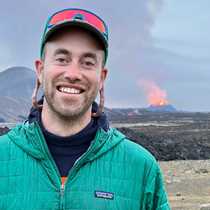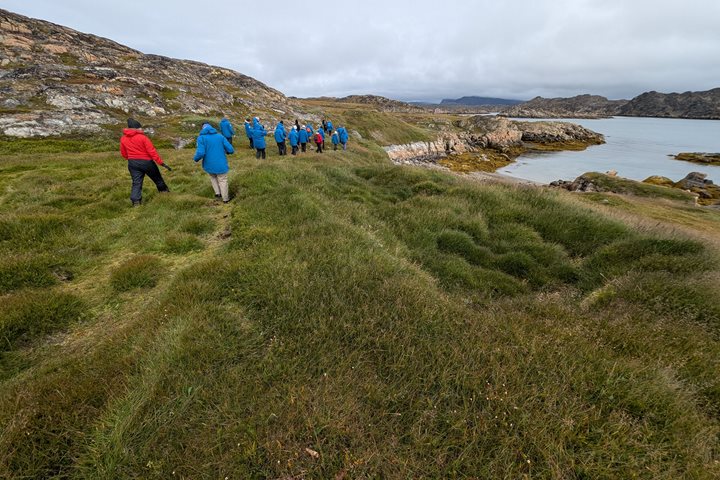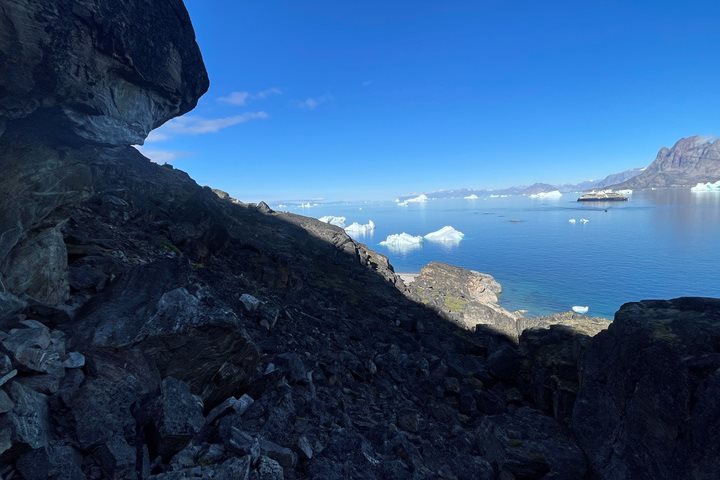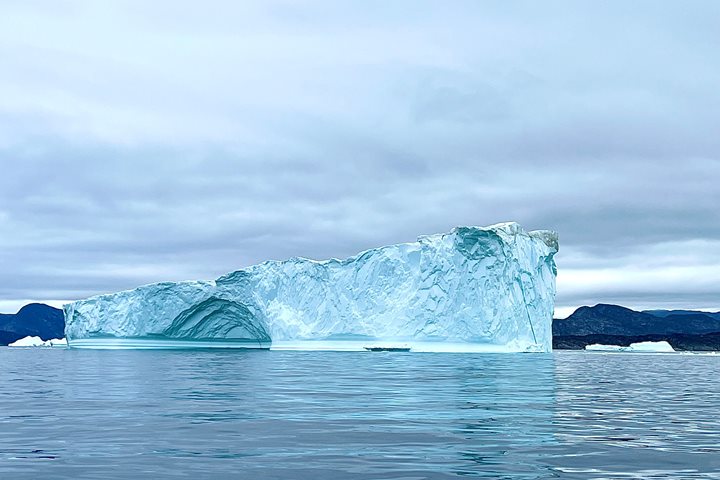Thinking back on yesterday’s awesome arrival into Southern Greenland, through the stark and towering walls of Prins Christianssund and into the frigid waters rimmed with icebergs of Nanortalik, one wonders what the first Norse settlers would have thought of this new land to the west. With Erik the Red’s cheeky marketing of “greenland” fresh in their ears, did they arrive as we did, to bluebird skies and calm weather, giving them ample time to consider just what exactly they had gotten themselves into? What was it like to be aboard the remaining dozen-some ships, beaten and bruised by their sail into the unknown, haggard and eager for landfall, only to be greeted by one of our planet’s greatest and everlasting shields of rock, a massive massif carved by irresistible ice and facing the fierce North Atlantic with a resolve that few sailors had ever bested? How far can the pit of a stomach drop?
But then, what must it have been like to escape as we did today, into the quiet of the Hvalsey Fjord, away from the temper of the open sea, and to tuck away on a rolling hillside reaching into the low cloud ceiling, waters rising and lowering with the tide and wind and not much else. It must have felt like some semblance of home, the subarctic landscape rhyming with much of the old earth from the British Isles to Norway, the icebergs flowing into the calm waters, sailing companions on their own voyage through the quiet landscape and lost in the fog.
We exited the ship into the quiet morning and landed at Qaqortukulooq and the Hvalsey church ruins. Here was one of the last standing structures of the Norse settlement, present since those final days when the years had only three digits and still here 600 years on from its abandonment in the early 15th century. The building went out with a bang it would seem—a wedding ceremony that lasted three weeks here in 1408 would be the last missive from these pastured lands, the forever silence of the fjord returning shortly thereafter, the Norse experiment vanishing into the mist they had once broken through.
How fitting then that we would sail a short distance away to the largest town in Greenland, Qaqortoq, home to 3,000 people thriving within the rich fishing grounds of this storied fjord system. We bid our local guides Salik and Suuluaraq adieu after they guided us through the town’s historical and culinary highlights (fresh sea urchin and sugar kelp will be gracing our plates tomorrow!), and we were able to explore on our own for some time. The grocery store’s aisles featured Hawaiian and musk ox pizza, fish sticks and narwhal slabs, mature cheddar and pickled herring. The islands of the nearby lake smoothed by millennia of ice hosted wetsuit-clad teenagers diving into their sunny Sunday. The oldest fountain in Greenland stood in view of a bus stop tagged with the universal language of childhood: forbidden words and love notes. People the world over have always been the same: human, complex, and simply living as they carve out a little space for themselves in a world that can be molded to accommodate you as long as you’re flexible enough to withstand its inevitable temper. As we sailed away from the town, with whispers of an incoming airport and booming ecotourism studies at the university, the ancient fjord was in no hurry to return to its eternal quiet, the grand human experiment ever reinventing itself as Greenland reveals itself to the world at large.







